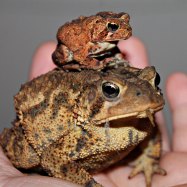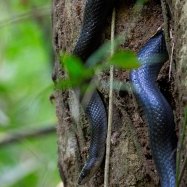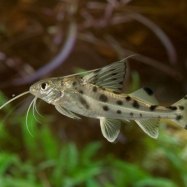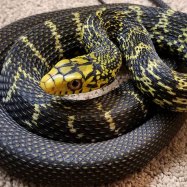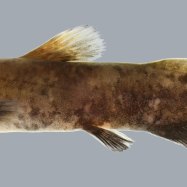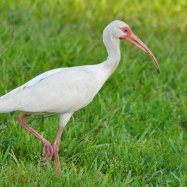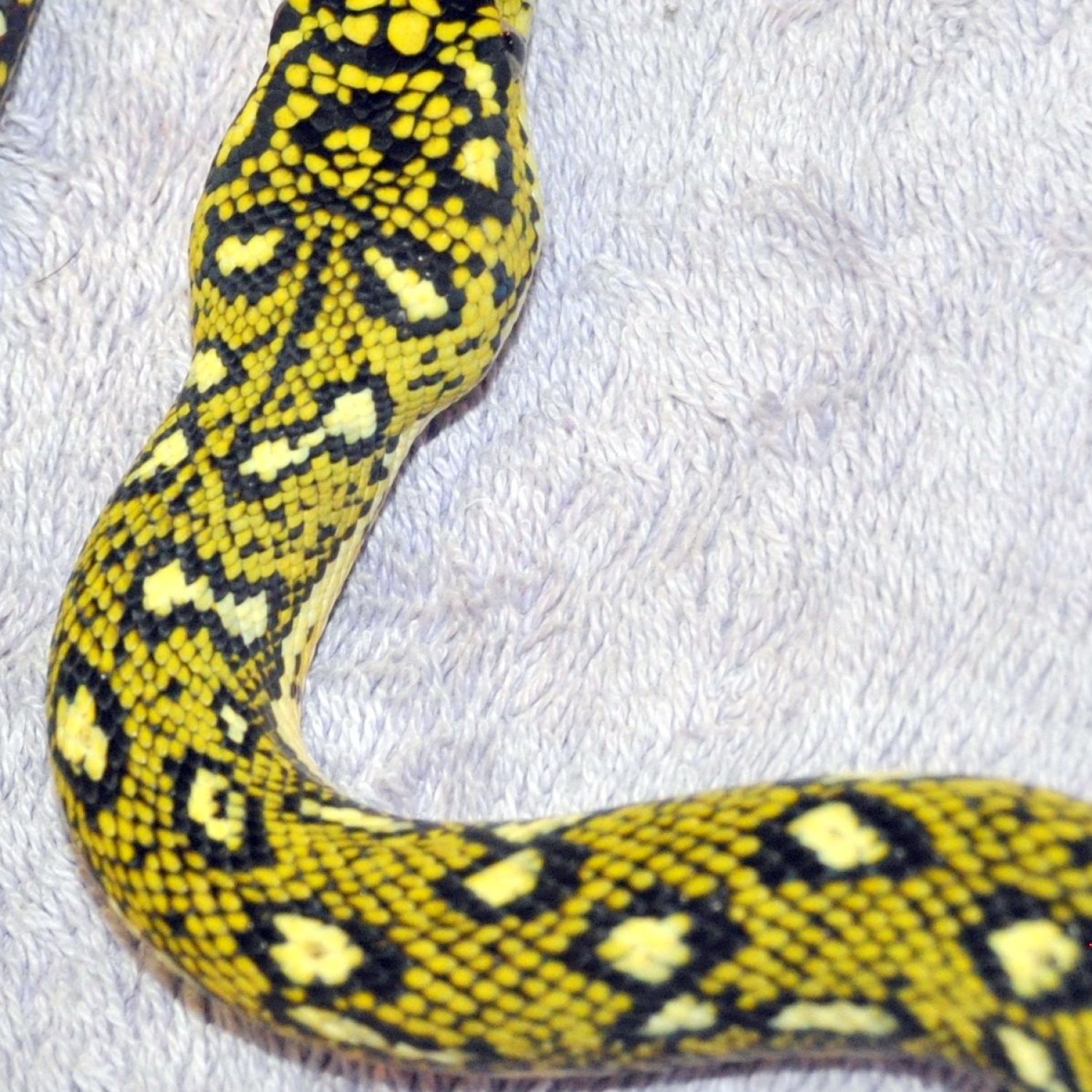
Diamond Python
2-3 meters
The Diamond Python, found in Eastern Australia, is a stunning species from the Pythonidae family. With a length of 2-3 meters, this long and slender snake is a popular pet choice. However, make sure to do proper research and understand their care requirements before bringing one home. #DiamondPython #EasternAustralia #Pythonidae #LongSnake
Animal Details Summary:
Common Name: Diamond Python
Kingdom: Animalia
Habitat: Rainforests, woodlands, grasslands
The Dazzling Diamond Python: A Fascinating Australian Snake
The Australian continent is home to a wide variety of unique and fascinating animals, and the Diamond Python is no exception. With its striking appearance and interesting characteristics, this snake has captured the interest and curiosity of many. Also known as Morelia spilota spilota, the Diamond Python is a non-venomous snake that can be found in the eastern parts of Australia. Let's take a closer look at this beautiful creature and discover what makes it stand out from its reptilian counterparts Diamond Python.Classification and Habitat
As with all living things, understanding the taxonomy of an animal helps in unlocking its biological traits. The Diamond Python belongs to the Animalia kingdom, the Chordata phylum, and the Reptilia class. It is part of the Squamata order and the Pythonidae family, which also includes other well-known pythons such as the Burmese Python and the Reticulated Python.The Diamond Python is typically found in the rainforests, woodlands, and grasslands of eastern Australia, particularly in the states of New South Wales, Victoria, and Queensland. These habitats provide the perfect environment for the snake, as they offer ample food sources and shelter. Despite being mainly found in these regions, some sightings have been reported in urban areas due to their adaptability and resilience.
Feeding and Hunting Behavior
As a carnivorous species, Diamond Pythons primarily feed on other animals, with their diet consisting of small mammals, birds, and other reptiles. Their feeding method includes constriction, where they coil their body around their prey and squeeze until it suffocates. They are known to have a slow metabolism, which allows them to go for long periods without food, making them highly efficient hunters Dusky Shark.Diamond Pythons are non-venomous, which means that they do not possess venom to immobilize their prey. Instead, they use their muscular bodies to overpower their victims. Their excellent camouflage and ability to remain motionless for long periods also make them successful hunters. They are primarily nocturnal, which allows them to hunt undetected, using their sharp vision and heat-sensing pits to locate their prey.
Distribution, Origin, and Adaptability
The Diamond Python is an endemic species, which means that it can only be found in Australia. It is believed to have originated in the eastern parts of the country and has since adapted to thrive in its natural habitat. With its widespread distribution, it is evident that these snakes are adaptable creatures, able to survive in various terrains and conditions.While they prefer the warmer and more humid regions of eastern Australia, they have been observed to tolerate colder temperatures, making them adaptable to different climates. This adaptability also allows them to survive in urban settings and even suburban areas, where they may occasionally encounter humans.
A Head-Turning Appearance
One of the defining features of the Diamond Python is its unique coloration. As the name suggests, these snakes have a diamond-shaped pattern on their backs, with a black base color and yellow or white diamonds. These markings are highly precise and symmetrical, making them a sight to behold. The diamond pattern acts as an excellent camouflage, allowing them to blend in with their surroundings and remain hidden from predators and prey alike.Apart from the diamond pattern, these snakes have a long and slender body that can grow to an average length of 2-3 meters. They also have a large head and strong jaws, used for constricting prey. Their scales are smooth, with a glossy appearance, giving them a shiny and sleek look. With their striking appearance, Diamond Pythons are regarded as some of the most beautiful snakes in the world.
Threats and Conservation Efforts
As with many other animals, the Diamond Python faces various threats to its survival. Habitat loss and degradation are significant concerns, as deforestation and urban development continue to encroach on their natural habitat. Fragmentation of their habitat also poses a threat, as it limits their ability to move freely and find food and shelter.These snakes are also sometimes targeted by humans for their skin, which is used in the fashion industry to make handbags, shoes, and other luxury items. While there are laws in place to regulate the trade of snake skins, illegal activities still pose a significant threat to the Diamond Python's population.
Fortunately, there have been efforts to protect and conserve this species, particularly through the establishment of protected areas and conservation programs. With these measures in place, there is hope for the Diamond Python's survival and sustainability.
The Science of Diamond Pythons
The Diamond Python has also captivated the attention of scientists and researchers, who have been studying this species in-depth. As a result, a lot of fascinating information about these snakes has been discovered.For instance, it is believed that Diamond Pythons have a lifespan of up to 20 years in the wild, and even longer in captivity. They are also known to be oviparous, laying eggs for reproduction rather than giving birth to live young. A clutch of 10-30 eggs is typically laid in a warm and humid environment, and the female may coil around them to provide warmth and protection until they hatch.
Research has also shown that Diamond Pythons have a unique way of regulating their body temperature. Unlike mammals, these snakes cannot produce body heat internally. Instead, they rely on external heat sources, such as basking in the sun, to warm their bodies. However, during cold weather, they are known to shiver, which produces heat and helps maintain their body temperature.
The Diamond Python in Popular Culture
The striking appearance and mysterious nature of the Diamond Python have not gone unnoticed by popular culture. These snakes have been featured in various forms of media, such as movies, TV shows, and books. One notable example is the character Nagini in the Harry Potter book and movie series, portrayed as Lord Voldemort's snake companion and Horcrux.In literature, the Diamond Python has also been mentioned in works such as Colin Thiele's "Sun on the Stubble" and Peter Hooper's "Diamond Python," where the snake's natural habitat, behavior, and characteristics are described in detail.
In Conclusion
The Diamond Python is a captivating and intriguing creature, with its dazzling appearance and unique characteristics. From its hunting and feeding behavior to its adaptability and conservation efforts, this snake has proven to be a remarkable species. As we continue to learn more about these beautiful creatures, it is crucial to remember the importance of protecting and preserving their natural habitat. Let us appreciate and admire the Diamond Python from a safe distance, allowing them to thrive in their natural environment.

Diamond Python
Animal Details Diamond Python - Scientific Name: Morelia spilota spilota
- Category: Animals D
- Scientific Name: Morelia spilota spilota
- Common Name: Diamond Python
- Kingdom: Animalia
- Phylum: Chordata
- Class: Reptilia
- Order: Squamata
- Family: Pythonidae
- Habitat: Rainforests, woodlands, grasslands
- Feeding Method: Carnivorous
- Geographical Distribution: Australia
- Country of Origin: Australia
- Location: Eastern Australia
- Animal Coloration: Black with yellow or white diamond-shaped markings
- Body Shape: Long and slender
- Length: 2-3 meters
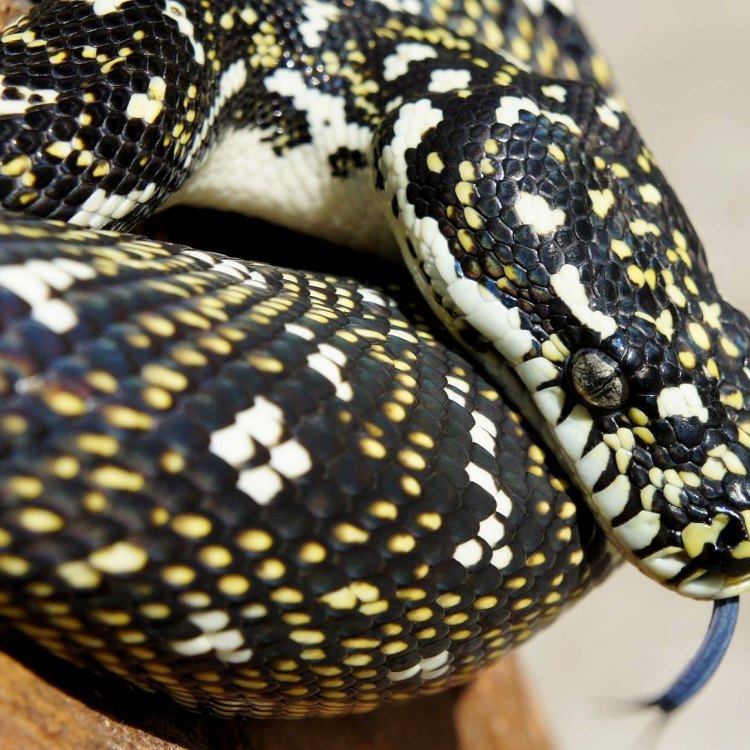
Diamond Python
- Adult Size: 2-3 meters
- Average Lifespan: 20-30 years
- Reproduction: Oviparous
- Reproductive Behavior: Mating occurs in spring, eggs are laid in summer
- Sound or Call: Hissing when threatened
- Migration Pattern: Non-migratory
- Social Groups: Solitary
- Behavior: Nocturnal, primarily arboreal
- Threats: Habitat loss, road mortality, illegal pet trade
- Conservation Status: Least Concern
- Impact on Ecosystem: Apex predator in its habitat
- Human Use: Pets, leather production
- Distinctive Features: Diamond-shaped markings, smooth scales, heat-sensitive pits
- Interesting Facts: Diamond Pythons are named for their distinctive diamond-shaped markings. They are excellent climbers and can often be found in trees. Their heat-sensitive pits on the upper lip help them locate warm-blooded prey. Despite their large size, they are non-venomous and rely on constriction to subdue their prey.
- Predator: Humans, birds of prey
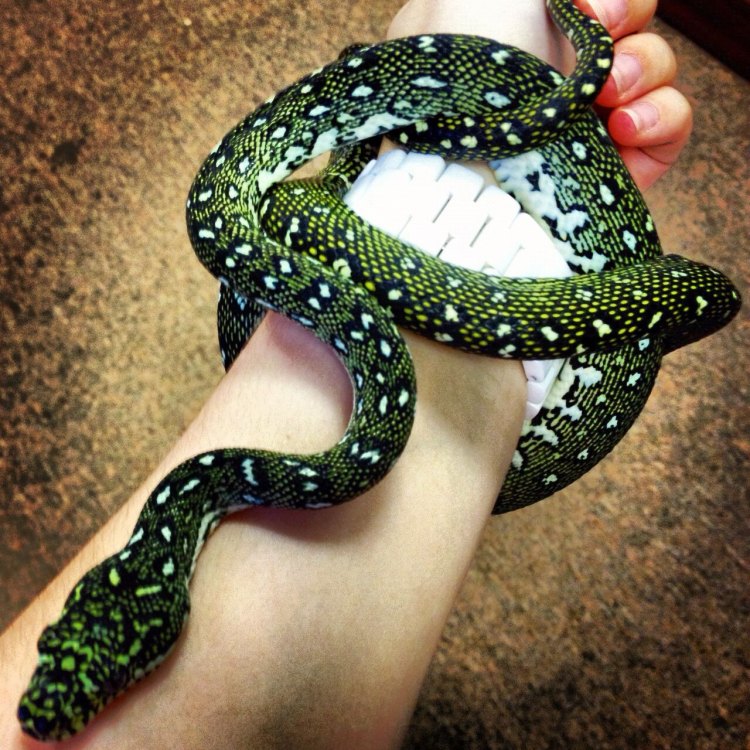
Morelia spilota spilota
The Fascinating Species that is the Diamond Python
Australia is home to some of the most unique and fascinating creatures in the world, and the diamond python is no exception. This magnificent snake, scientifically known as Morelia spilota spilota, is native to IUCN's Red List of Threatened Species, and its conservation status is least concern. However, this does not mean we should overlook this captivating species. In this article, we will explore the distinctive features, behavior, threats, and human use of the diamond python, as well as its impact on the ecosystem PeaceOfAnimals.Com.Distinctive Features
Diamond pythons are well-known for their stunning appearance, with a distinctive pattern of diamond-shaped markings along their body. These markings have earned them their common name and make them stand out in their natural habitat of woodlands and forests. They have smooth scales, giving them a glossy appearance, and can come in a range of colors, from dark gray to black with cream or yellow markings.
One of the most notable features of the diamond python is their heat-sensitive pits on their upper lip. These pits allow them to detect warm-blooded prey, even in complete darkness. This unique sensory ability sets them apart from other snakes, and it is a crucial tool for hunting and survival.
Adult Size and Reproduction
Diamond pythons are a reasonably large species of snake, with the average adult size ranging from 2-3 meters in length. They have a lifespan of 20-30 years, making them a long-lived species of snake.
Reproduction in diamond pythons is quite fascinating Deathwatch Beetle. Like most snakes, they are oviparous, meaning they lay eggs to reproduce. Mating typically occurs in the spring, and the female will lay a clutch of 10-50 eggs in the summer, depending on her size and health. The eggs are then incubated for around 2-3 months before hatching into cute baby diamond pythons.
Behavior and Social Groups
Diamond pythons are primarily nocturnal, meaning they are most active at night, and they are also solitary animals. They are excellent climbers and can often be found in trees, where they hunt for prey and seek refuge from predators. They are agile and have been observed climbing vertically up smooth surfaces, thanks to their sharp claws. However, they are also great swimmers and can move through water with ease.
Despite their large size, diamond pythons are non-venomous and rely on constriction to subdue their prey. They are skilled hunters and commonly feed on small mammals, birds, and reptiles, but they have also been known to attack larger prey, such as wallabies and possums.
Threats and Conservation Status
Like many other reptile species, diamond pythons face several threats to their survival. The most significant threat is habitat loss due to urban development and agricultural activities, leaving them with fewer places to call home. They are also at risk of road mortality, as they often cross roads and highways while searching for food or a new habitat.
Another significant threat to diamond pythons is the illegal pet trade. These beautiful creatures are often coveted as exotic pets, leading to poaching from their wild habitats. This not only harms the individual snakes but also disrupts the ecosystem, as they play a vital role as apex predators in their habitat.
Despite these threats, the diamond python is currently listed as least concern on the IUCN Red List. This is due to their wide distribution and adaptability to various habitats, as well as their relatively stable and large population.
Impact on the Ecosystem and Human Use
As apex predators, diamond pythons play a crucial role in maintaining a balanced ecosystem. They keep prey populations in check, preventing overgrazing and maintaining the health and diversity of their habitats. They also help control pest populations, such as rodents, which can be a nuisance to humans.
In terms of human use, diamond pythons have been popular as exotic pets for many years. However, keeping them as pets can be challenging, as they require specific care and handling. Therefore, it is essential to only obtain diamond pythons from reputable breeders and not support the illegal pet trade.
Another human use of diamond pythons is their leather production. The unique diamond markings on their skin make for an attractive and desirable material, but this further contributes to their decline in the wild. It is essential to choose sustainable and ethical alternatives when it comes to fashion and avoid supporting the consumption of exotic animal products.
Interesting Facts
Aside from their distinctive features and behavior, diamond pythons have some other interesting facts that will surely captivate you. These snakes are skilled escape artists and have been known to break out of their enclosures or even unlatch locks to get out. They also have excellent camouflage abilities, making them hard to spot in the wild. Additionally, diamond pythons are excellent mothers and have been observed coiling around their eggs and shivering to keep them warm until they hatch.
Predators
While diamond pythons are apex predators in their natural habitat, they do have some natural predators. Their eggs and hatchlings are often preyed upon by birds of prey and larger snakes. However, the biggest threat to diamond pythons comes from humans, either through illegal poaching or habitat destruction.
In conclusion, the diamond python is an entirely unique and fascinating species of snake found in the diverse landscape of Australia. With their distinctive diamond markings and heat-sensitive pits, they are truly one of a kind. But like any other species, they face several threats and need our protection to continue thriving in the wild. It is essential to educate ourselves and others on the importance of preserving these creatures and their habitats for future generations to admire and appreciate.
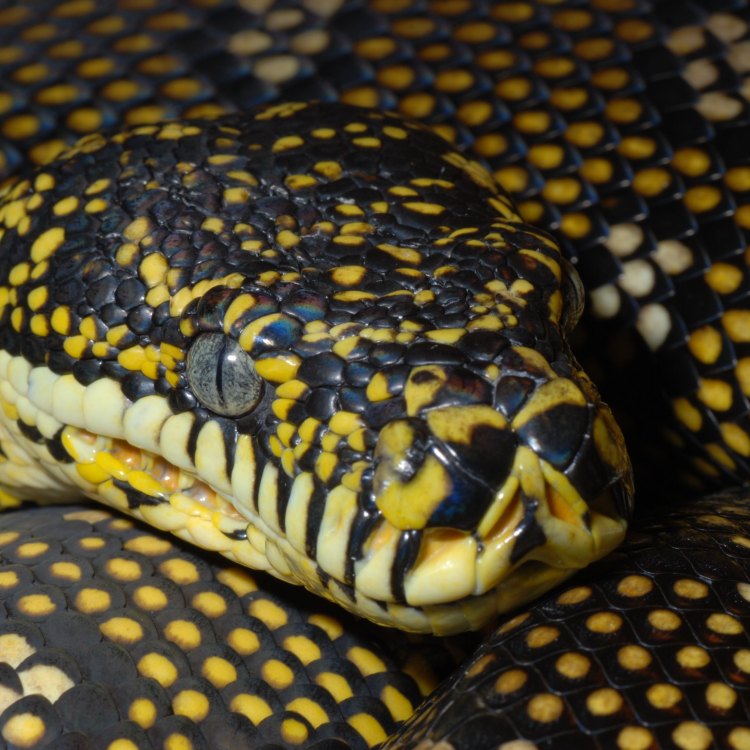
The Dazzling Diamond Python: A Fascinating Australian Snake
Disclaimer: The content provided is for informational purposes only. We cannot guarantee the accuracy of the information on this page 100%. All information provided here may change without prior notice.

